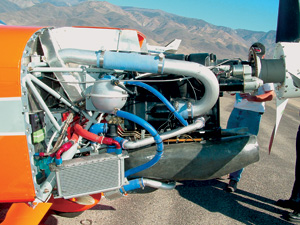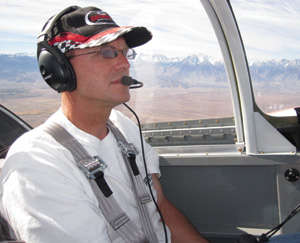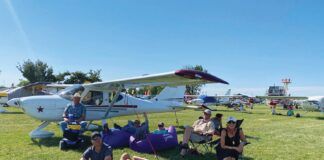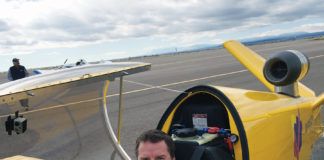I have this theory. Companies and individuals developing new products in the Experimental world are defined by their ability to get the word out. Or so they seem to think. It appears to me that the companies who have the least to talk about are often the most vocal—and this is plentifully evident in the engine category.
How many new designs have we seen launched at Sun n Fun or Oshkosh amid promises of development test-flying almost complete, parts ordered, engines ready to go any day now? How many builders have seen the potential of a fresh engine approach—or even an old one newly rendered—and elected to invest their hard-earned cash, slow work on their projects and take additional risks to follow that dream? Many.
Personality plays a part. We in the homebuilt world have seen our share of hucksters, the convincing individuals who know the best way forward and possess the skills to influence others. Sometimes this personality type is also an engineer, but most often he’s a dreamer, a self-styled visionary. When that person tries to be both, trouble isn’t far away.

The best engineers I know begin with a foundation of proven knowledge. It’s a matter of “I know this will work” not “I think this will work. “They proceed methodically in the general direction of the goal. In the case of an engine, this begins with design work, computer modeling and then onto prototype manufacturing, which is beset with a constellation of potential setbacks from the simple ability to cast or machine a part to vetting vendors (and keeping them once they realize you’re making airplane parts), all the way through accurate and careful dynamometer testing and finally the initial flight-test articles.
Over time, shortcomings are uncovered. These may include materials that are too weak or too strong (yes, thats a possibility), construction thin or too thick, combustion chambers prone to detonation, or a cooling system that, on paper, does the job but can’t keep up with the heat-rejection needs of the engine in the worst-case scenario. (And don’t get me started on those engineers who argue that the certification requirements for aircraft engines are too onerous. If anything, aspects of them aren’t tough enough.) Developing a new engine from scratch is an arduous, grinding, monotonous job whose details often fail to yield to prolonged effort no matter how hopeful.
And what if you find the deal killer? I’m convinced that a fair number of promised but undelivered new engine designs are first felled by a lack of funding for the development process—a difficult time where all the money is whooshing out the door, with nothing coming in—but a good portion of them arrive at a point in the refinement process where an assumption has gone wrong or a critical element of the design is finally deemed unworkable. What do you do then? If you’re a small company, can you survive a wholesale redesign of some major component? How long will the customers wait for you to formulate a fix? And what if that fix eats into performance or weight or fuel economy advantages at the heart of the design’s appeal? Engineers or managers who opt for the quick fix to salvage a design run the risk of having to do so time and time again. Adding your customers to the engineering staff is, in my view, inexcusable.
You can see just how treacherous these waters can be, and perhaps better understand why the most successful alternative engines benefit from expensive, prolonged engineering by others. If Mazda has spent untold millions developing the rotary, or Volkswagen decades refining the flat-four, take advantage of that effort, which I can assure you is of a much grander scale than any small airplane engine manufacturer can muster. I’m a big fan of those who recognize the accomplishments of major manufacturers and appreciate that having a room full of engineers is a good thing—and I am a particularly big fan of those who understand that aircraft installations pose a particular challenge, so that some modification is necessary to make the core engine work. You have to respect those who know when not to fix something that isn’t broken, but who know enough to make important modifications for aircraft use.

I realize we need hopeful optimism in new-engine design, otherwise no one would attempt to push the boundaries.
I have a success story. Mark Wilksch has been gnawing away at his inverted, inline designs for 16 years. Crucially, his work was underpinned by both private-equity financing and a government technology grant, thus freeing him from the pressure of getting the engine workable enough to ethically take deposits, then hurrying development and production so that those customers would be minimally unhappy. (There’s no such thing as a truly sanguine early adopter.) In the U.S., we don’t hear much from Wilksch, and aircraft builders outside of the U.K. almost have to beg to get an engine. Wilksch’s efforts have been on our radar, but my personal view is that talk is cheap. Show me a good-running example with plenty of flight time…then well talk.
Not to minimize the work of those flying Wilksches in Europe, but Kurt Goodfellow may well be the best PR campaign a company could hope for. He’s humble yet enthusiastic. And he has an actual, working, lets-go-fly-it example of the product. True, builder Goodfellow used his knowledge of diesel engines to modify the out of the box Wilksch layout, but his efforts have been successful, something the home office recognizes. Where most diesels exact a price in cooling drag—the basic cooling needs plus the necessity of reducing the inlet-air temperature through air-to-air intercooling—Goodfellow’s airplane performs on par with an RV-9 packing the O-235 Lycoming of similar power. And this despite a three-blade prop thats likely to be slower in cruise than the prop used to gather data on the Van’s factory-built RV-9. We know, then, that the Wilksch is producing the promised power and that the installation makes the best of its cooling demands.
Beyond these facts are a few others that make me believe the Wilksch is a player. I didn’t once hear “Oh, well…thats not quite right, well fix that in the next round,” or “We haven’t calibrated the instruments, so the numbers you see aren’t accurate.” No excuses…let go fly.
And then there’s this: The WAM-120 simply works. Works great, in fact. Thats something to shout about.













